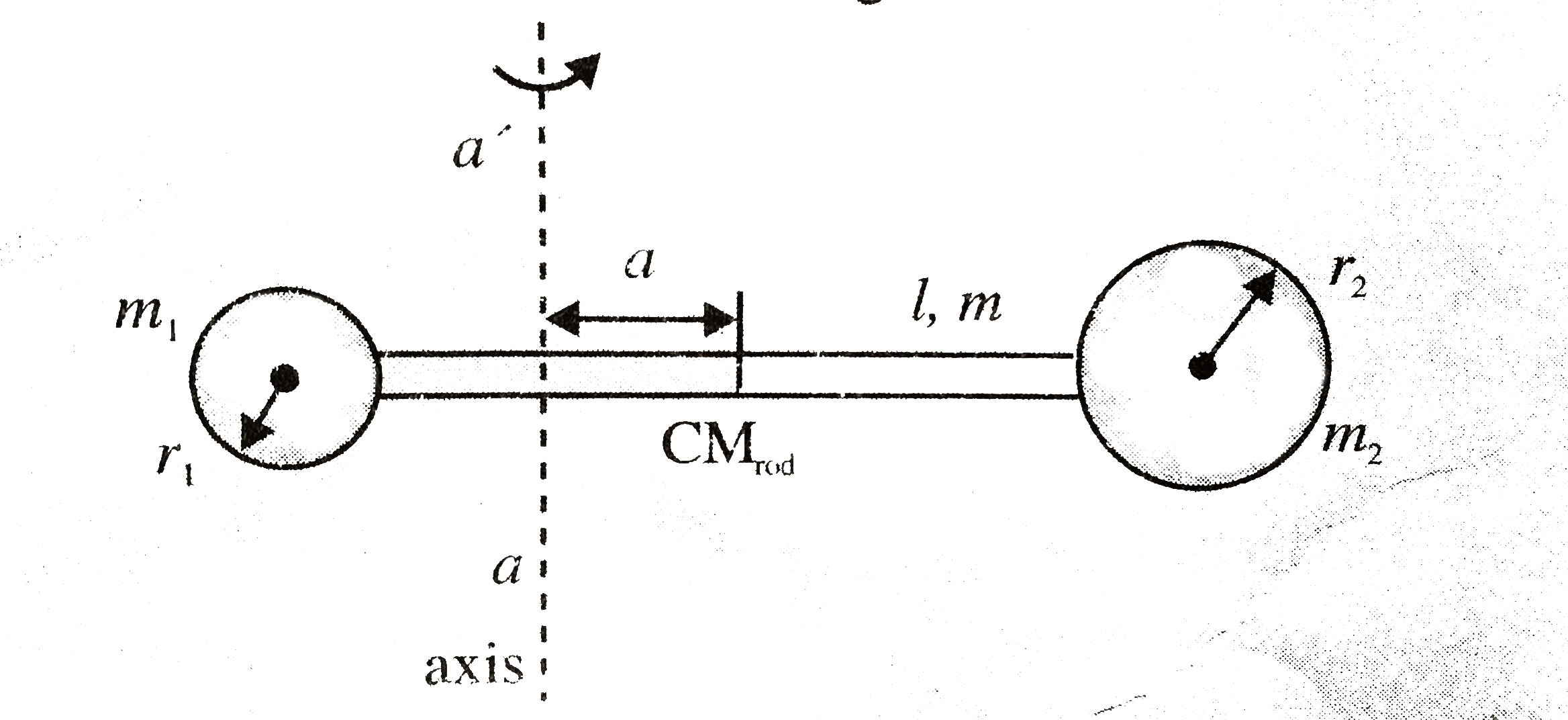Two homogeneous spheres A and B of masses m and 2m having radii 2a and a respectively are placed in touch . The distance of the centre of mass from the first sphere is
a
none of these
The correct Answer is:B
To find the distance of the center of mass from the first sphere (sphere A) when two homogeneous spheres A and B are placed in touch, we can follow these steps:
1. Identify the Masses and Positions:
- Let the mass of sphere A (m) be at position x1=0 (the origin).
- Let the mass of sphere B (2m) be at position x2=3a (since sphere B is in touch with sphere A, and the radius of sphere A is 2a and the radius of sphere B is a, the distance between their centers is 2a+a=3a).
2. Use the Center of Mass Formula:
The formula for the center of mass xcm of two objects is given by:
xcm=m1x1+m2x2m1+m2
where m1 and m2 are the masses of the two spheres, and x1 and x2 are their respective positions.
3. Substitute the Values:
- For sphere A: m1=m, x1=0
- For sphere B: m2=2m, x2=3a
Substituting these values into the formula:
xcm=m⋅0+2m⋅3am+2m
4. Simplify the Expression:
xcm=0+6ma3m=6ma3m=2a
5. Conclusion:
The distance of the center of mass from the first sphere (sphere A) is 2a.
Final Answer:
The distance of the center of mass from the first sphere is 2a.
- Let the mass of sphere A (m) be at position x1=0 (the origin).
- Let the mass of sphere B (2m) be at position x2=3a (since sphere B is in touch with sphere A, and the radius of sphere A is 2a and the radius of sphere B is a, the distance between their centers is 2a+a=3a).
The formula for the center of mass xcm of two objects is given by:
xcm=m1x1+m2x2m1+m2
where m1 and m2 are the masses of the two spheres, and x1 and x2 are their respective positions.
- For sphere A: m1=m, x1=0
- For sphere B: m2=2m, x2=3a
xcm=m⋅0+2m⋅3am+2m
xcm=0+6ma3m=6ma3m=2a
The distance of the center of mass from the first sphere (sphere A) is 2a.
The distance of the center of mass from the first sphere is 2a.
Similar Questions
Two spherical bodies of masses m and 5m and radii R and 2R respectively, are released in free space with initial separation between their centres equal to 12 R. If they attract each other due to gravitational force only, the distance covered by smaller sphere just before collision is
View SolutionTwo spherical bodies of masses m and 6m and radii R and 2R respectively are released in free space with initial separation between their centres equal to 10 R . If they attract each other due to gravitational force only , then the distance covered by smaller sphere just before collisions will be
View Solution
Knowledge Check
Two spheres of the same materials have radii 1 m and 4 m and temperatures 4000 K and 2000 K resectively the energy radiated per second by the first sphere is
Agreater than that by the secondBless than that by the secondCequal in both casesDthe information is incomplete to draw any conclusion.Two spheres each of mass M and radius R are separated by a distance of r. The gravitational potential at the midpoint of the line joining the centres of the spheres is
A−GMrB−2GMrC−GM2rD−4GMr
Two uniform solid of masses m1 and m2 and radii r1 and r2 respectively, are connected at the ends of a uniform rod of length l and mass m. Find the moment of inertia of the system about an axis perpendicular to the rod and passing through a point at a distance of a from the centre of mass of the rod as shown in figure.

View SolutionFour identical spheres each of radius 10 cm and mass 1 kg are placed on a horizontal surface touching one another so that their centres are located at the corners of square of side 20 cm. What is the distance of their centre of mass from centre of either sphere ?
View SolutionTwo spheres each of mass M and radius R are separated by a distance of r. The gravitational potential at the midpoint of the line joining the centres of the spheres is
View SolutionTwo spheres one of mass M has radius R. Another sphere has mass 4M and radius 2R. The centre to centre distance between them is 12R. Find the distance from the centre of smaller sphere where
(a) net gravitational field is zero,
(b) net gravitational potential is half the potential on the surface of larger sphere.
View SolutionTwo spheres of the same material have radii 1m and 4m and temperatures 4000K and 2000K respectively. The ratio of the energy radiated per second by the first sphere to that by the second is
View SolutionTwo spheres A and B are charged with the charges of +10 and +20 coulomb respectively and separated by a distance of 80 cm. The electric field at point on the line joining the centres of the two spheres will be zero at a distance from the sphere A :
View Solution
